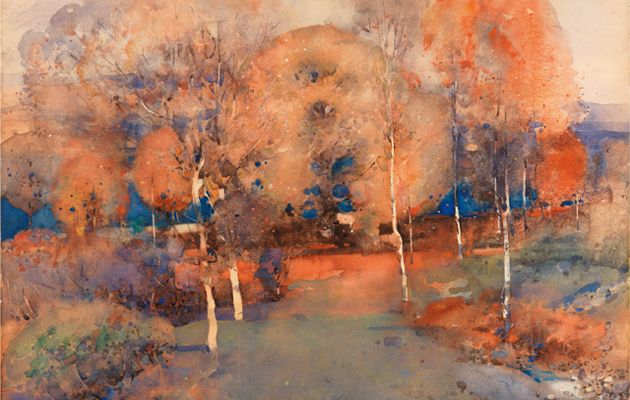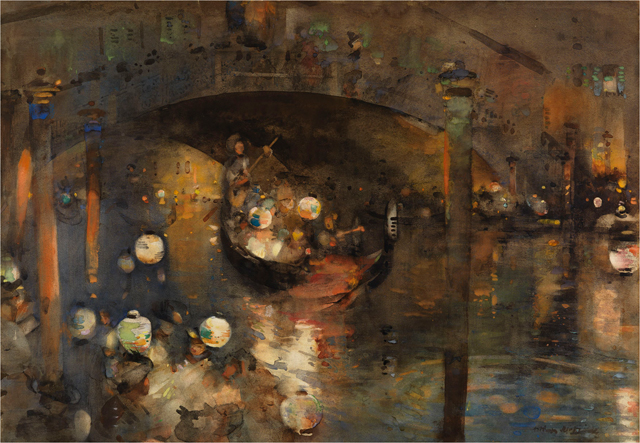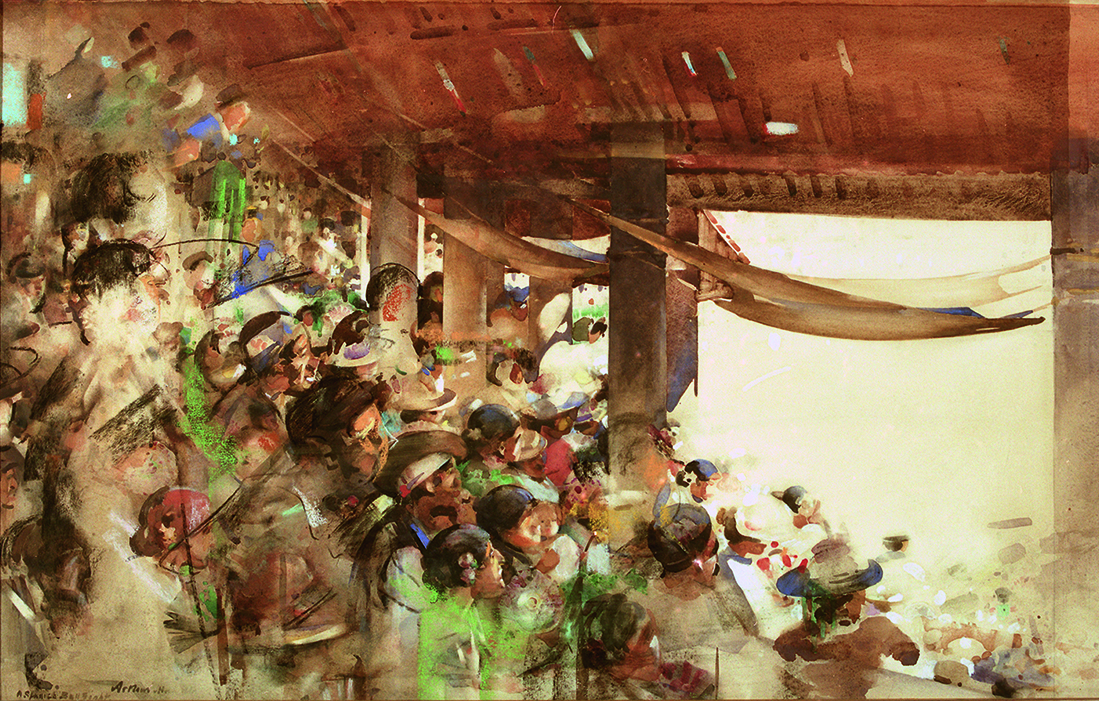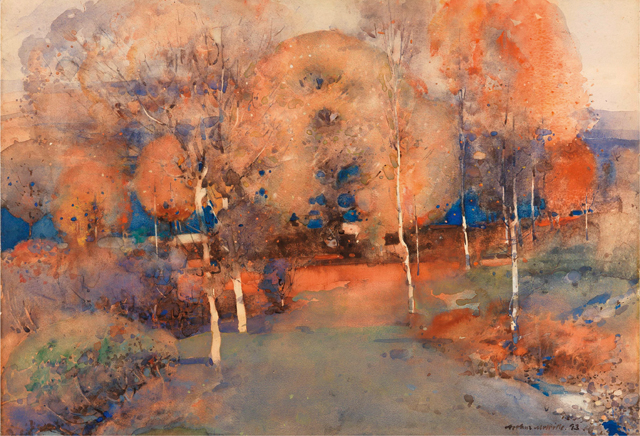Exhibition review: Arthur Melville
A new exhibition on the works of Arthur Melville proves he was one of the most important and innovative artists Scotland has ever produced


Ask any reader of this magazine to name famous Scottish artists and the answers will be all too predictable. Allan Ramsay, Alexander Nasmyth and Henry Raeburn might figure as the Old Masters, followed by the elder William McTaggart, E. A. Hornel, the Colourists and, more recently, Peter Howson and his contemporaries and the mavericks of Glasgow’s Young British Artists, most notably Douglas Gordon. It’s doubtful that you’ll find Arthur Melville (1855–1904) high on the list, yet he was one of the most important and innovative artists that Scotland has ever produced and he was much more than just a Scottish artist. He was, at heart, a true internationalist. An exhibition opening in Edinburgh later this week at last gives us the chance to reappraise his work and place it in its proper context. Melville was, most famously, an artist in watercolour and his paintings sing from their frames in vivid splashes of colour and an entirely original Impressionistic use of the medium that conveys movement and the fleeting nature of human experience. In many instances, they seem well ahead of their time, imbued with a sense of modernity lacking in the work of most of his contemporaries. However, Melville’s beginnings as an artist were very different.
His artistic roots are well demonstrated by an early work, A Cabbage Garden, executed in 1877 when Melville was 22. Painted in a restrained palette of earthy oils, it reveals not only his roots in rural Angus, but also his debt to the Dutch Realist painters of the Hague School, along with the domestic Realism of the indigenous Scottish ‘kailyard’ genre, derived from such artists as David Wilkie and Erskine Nicol. Developing his youthful talent, Melville followed the well-trodden path from the Royal Scottish Academy to Paris in the late 1870s, studying at the Académie Julian, where he absorbed the lessons of such Realist painters as Jules Bastien-Lepage and Jean-François Millet. However, by 1880, it is possible that he was already embracing the ideals of the fastgrowing Aesthetic Movement and moving away from the robust Realism of his early works.
It was surely with a mind filled with radical notions about the possibilities of paint that Melville set out in the autumn of that year for Egypt. In Cairo, he was instantly captivated by the people, the colour and, above all, the light. Within a year, he was painting in watercolour with an extraordinary dexterity and originality, taking every opportunity to develop his technique.
Fleeing Egypt in the face of its escalating conflict with Britain, he continued through the Middle East, sailing to Aden and Karachi and arriving in Muscat in April 1882. From there, he went to Baghdad. He returned by way of Constantinople and his journal recounts how he was attacked by robbers and left for dead before being rescued and imprisoned by a Pasha, on suspicion of being a spy. It was the stuff of an adventure novel and the extraordinary people and places he encountered furnished Melville with material not only for a detailed journal (now in the National Library of Scotland), but also a rich store of drawings, which, over the next two decades, he would use time and again as the inspiration for major works.
Back in Scotland, he was befriended by the association of painters known as the Glasgow Boys, including John Lavery, James Guthrie and E. A. Walton, although he was never truly one of them. He did, however, share their enthusiasm for painting at the village of Cockburnspath in Berwickshire and it was here that, in 1884, he began a large canvas depicting a scene from As You Like It (Fig 1).
Perhaps one of the most important and leastknown British pictures of the late 19th century, Audrey and her Goats is, in effect, a Symbolist painting, with more in common with Puvis de Chavannes or Gauguin than any of the Glasgow artists. In it, Melville attempts to marry the essentially flat, planar language of the Continental Symbolists with a form of naturalism. He succeeds and, in doing so, also allies himself with the artists of the Arts-and-Crafts movement, emphasising the emotional effect of colour, tone and line on the viewer. It was a bold step and it might seem curious that he didn’t follow it up immediately, but there was always a tentativeness about Melville, which ensured that Audrey would not be finished for another five years.

Instead, it was in watercolour that he now chose to experiment, by developing a distinctive ‘blottesque’ technique in which the few highly defined elements of the image were supported by a highly Impressionistic treatment of the whole. The Music Boat, Venice is one of his most important pictures in this context and, although exhibited in 1904, comparison with his Henley Regatta by Night of 1889 suggests that it dates from the early 1890s.
Sign up for the Country Life Newsletter
Exquisite houses, the beauty of Nature, and how to get the most from your life, straight to your inbox.
Like the Henley painting, The Music Boat owes something to Whistler’s Nocturnes, form being suggested principally by watery blots of white indicating the Chinese lanterns hung on the boats and the barely perceptible, but plausible, figures of the revellers. It is possible to experience these works on several levels. Standing before The Sapphire Sea and other iridescent Mediterranean watercolours, the viewer can luxuriate in Melville’s pure colour and evanescent light. However, look closer and you will see something more.

A Spanish Bullfight, painted in 1893, encapsulates this way of seeing, as Melville obliterates the spectacle of the bullfight itself and concentrates on conveying the emotional experience of the spectators, who are effectively looking at nothing more than a pool of bright white light. By its very lack of any form, that empty pool, together with the indistinct expressions of the crowd, conveys everything we need to know about what it actually felt like to be there.
Such works aside, it’s possible to argue that two oils demonstrate his intention more readily than the watercolours, which might be regarded as more commercial works. In The Contrabandista of 1892, it is again the unseen that dominates the image. In this case, the missing element is a line of trees, seen by the viewer only as shadows that fall high across the mountain road taken by a woman smuggler with a mule train. The apparent subject of the painting is again rendered peripheral to something else: the artist’s surroundings analysed in terms of pure, abstract form and colour.
The apogee of this response is another oil, The White Piano, begun in London in the summer of 1892, on Melville’s return from Spain. Measuring 6ft by 4ft, it is one of his largest works and represents a bold personal statement. The sitter, a Miss Margerison, sits before a white piano, itself a symbol of the Aesthetic Movement. She wears a floral-printed dress, whose silhouette forms the central motif of the work. The painting is divided into three horizontal bands of colour: brown floor, blue dado and red, patterned wallpaper.
Whistler had used similar ideas 20 years earlier, but he had done so with a considered use of muted tone. Here, with a revolutionary lack of restraint, space is depicted purely in terms of the relationship between the colours. It is a brilliantly pioneering painting, to which the closest parallel is found in the art of Gauguin and his disciples the Nabis, principally Paul Sérusier, Maurice Denis, Pierre Bonnard and Edouard Vuillard, who had held their first group exhibition in Paris in December 1891.

That it was also now possible for Melville to explore similar territory in his watercolours is demonstrated in Autumn Loch Lomond. This dates from 1893, which might be seen as his annus mirabilis. It is possible to see in this work the philosophy of the Central European Symbolists and it is telling that, when he showed in America in 1894, the critics should have summoned parallels with the writing of Henry Thoreau and Walt Whitman.
That same year, he showed, along with other Glasgow Boys, in Munich, and it is tempting to speculate whether, had he lived longer, that hugely influential centre of the European avantgarde might have become something of a spiritual home. We shall never know, for Melville’s life was cut tragically short in August 1904 by a double dose of typhoid, caught on an expedition with his wife to his beloved Spain. He was just 49. It was a tragic loss for British art: after 25 years of experimenting, Melville was discovering his true direction. Much more than the British Impressionist for which he is generally taken, Melville was a bridge between the two worlds of Realism and Symbolism, but he was a poor self-publicist.
Without the advantages of a notorious, Whistlerian succès de scandale or wealthy Society patrons, Melville failed to achieve artistic immortality. For too long, this vitally important figure in the shaping of Modern art has been consigned to the shadows. At last, this exhibition offers us the chance to understand the true meaning of his remarkable achievement.
‘Arthur Melville: Adventures in Colour’ is at the Scottish National Gallery, Edinburgh, October 10 to January 17, 2016 (0131–6246200; www.nationalgalleries.org)
Country Life is unlike any other magazine: the only glossy weekly on the newsstand and the only magazine that has been guest-edited by HRH The King not once, but twice. It is a celebration of modern rural life and all its diverse joys and pleasures — that was first published in Queen Victoria's Diamond Jubilee year. Our eclectic mixture of witty and informative content — from the most up-to-date property news and commentary and a coveted glimpse inside some of the UK's best houses and gardens, to gardening, the arts and interior design, written by experts in their field — still cannot be found in print or online, anywhere else.
-
 Hidden excellence in a £7.5 million north London home
Hidden excellence in a £7.5 million north London homeBehind the traditional façades of Provost Road, you will find something very special.
By James Fisher
-
 RHS Chelsea Flower Show: Everything you need to know, plus our top tips and tricks
RHS Chelsea Flower Show: Everything you need to know, plus our top tips and tricksCountry Life editors and contributor share their tips and tricks for making the most of Chelsea.
By Amie Elizabeth White